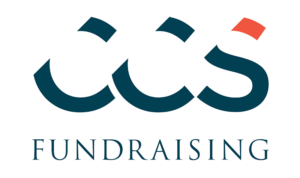Diversity, equity, and inclusion (DEI) is top of mind for independent schools as they aim to drive equitable social impact, and communications provide a link between fundraising and DEI strategy. According to the 2024 CCS Philanthropy Pulse, 84% of respondents in the primary and secondary education sector indicated that DEI is important in developing their strategic plans for future fundraising priorities, distinguishing the sector as a leader in DEI strategy. In fact, 93% of schools discuss DEI with donors—a rate 6% higher than all sectors combined. Additionally, a recent study by the Graduate School of Education & Psychology at Pepperdine University revealed that one of the five pillars of DEI in education institutions is communication, community education, and outreach.
While working alongside our nonprofit partners and recognizing both our ongoing growth and the dynamic nature of our efforts, CCS Fundraising has learned helpful DEI communication strategies for independent schools drawn from community-centric fundraising principles, which we share below.
Integrate DEI In Your Donor Engagement Tactics
DEI Policies and Practices
Educating potential donors on your independent school’s DEI policies and practices is a key step in developing a more inclusive philanthropy model. Utilize the school website, annual reports, alum magazines, and donor conversations as crucial opportunities to underscore your dedication to DEI. Clearly outlining inclusive programs, policies, and practices, supported by relevant data, is a transparent and proactive way to positively shape your school’s community and culture. This strategic approach reinforces the idea that philanthropy acts as a catalyst for genuine and lasting positive change within the communities you serve.
DEI and Collateral
Fundraising materials are an opportunity to highlight a diverse narrative of students, parents, faculty, and alums and can feature testimonials from various perspectives and voices. Ensure fundraising material visually reflects your school’s values and aligns with your school’s voice by instituting a review and approval process led by your DEI leaders.
Applying DEI to Outreach and Strategy
Within the donor cycle, where prospects typically navigate a shared “moves management” journey, it is important to recognize that each donor follows a unique path to a successful solicitation. Personalizing engagement involves considering various factors. For instance, prospects who have benefited from financial aid may find inspiration (or lack thereof) in their personal student experiences. Donors with an international background may approach philanthropy with perspectives distinct from those in American households. In addition, considerations around a prospect’s religious affiliations can significantly influence their interest in philanthropy. Attention to details, including meeting/event dates, numerical preferences, and preferred solicitors, allows you to tailor your approach thoughtfully.
DEI and Events
Whether your independent school is actively in a campaign or growing its annual fund, you are likely holding fundraising and engagement events throughout the year with various goals. When planning for these events, it is important to consider location, guest list, and programming to ensure that they are welcoming, inclusive, and serve the full community.

Location - When determining the event location, consider hosting on campus for familiarity and accessibility. If hosting an event off campus, consider a restaurant or event space, as events in private homes could feel exclusive.

Guest List - When creating the guest list, consider the event goals. For stewardship events, consider inviting donors at all levels and volunteers. For cultivation events, invite prospective donors with similar capacity and/or potential giving levels to ensure guests are aligned in their philanthropy approach.

Programming - When developing the program and remarks, consider featuring a variety of voices, including volunteers and donors with many years of consecutive giving, as well as major donors.
DEI and Volunteers
Engagement is a key metric of campaign success and an excellent way to increase perspectives, promote diverse voices, and intentionally build inclusive teams.
Without deliberately keeping DEI un mind, however, volunteer committees—in campaigns or, more broadly, in volunteer leadership—may reflect singular perspectives or become particularly homogenous. When planning a volunteer committee, it is important to utilize a volunteer matrix, consider scheduling constraints, and prioritize long-term volunteer cultivation.

Use a Volunteer Inclusivity Matrix: When developing a volunteer committee, consider utilizing a volunteer matrix to ensure a better balance of voices on the committee. Consider all demographics when building an inclusive team of voices, including school-specific identities such as alum graduation year or parent-related constituencies such as parent associations, admissions volunteers, etc. Actively ask yourself, “Who is not currently at the table?”

Consider Meeting Times: Particular meeting times for a volunteer committee—including certain periods of the day, meeting lengths, and/or days of the week—may serve as a barrier to entry for potential members. Consider those with inflexible work schedules, care-related duties, or religious obligations.

Create Opportunities for Engagement and Skill Growth: Just like donors, volunteers require strategic cultivation and stewardship. Consider the long-term pipeline of volunteers and create opportunities for those who may be inexperienced in fundraising efforts. Be particularly thoughtful about proactive outreach, as these prospective volunteers may be least likely to self-identify for roles.
DEI in Stewardship
Major gifts, endowed funds, and scholarship stewardship are important ways to celebrate the impact of your school community’s generosity, recognize donors for their contributions, and inspire future philanthropy. In recent years, CCS has strategized in partnership with independent school clients to take steps to avoid reinforcing negative stereotypes such as:
- Biases and stereotypes around the demographics and/or “typical profile” of a scholarship student
- Tokenism and othering of scholarship students
- Donor access to information about or contact with minors
Rather than providing scholarship funders with detailed reports about, or compulsory thank you letters from, scholarship recipients, schools have taken a comprehensive, uniform, yet detailed approach to steward donors who give to scholarships or have named scholarship funds.
A report might include:
- Aggregate Data on Financial Aid Funds - Number of financial aid students by class or campus, notes from advisors or student testimonials (consider anonymizing students), historical growth of financial aid budget (total budget, #/% of students receiving aid)
- Financial Aid in Action – stories and/or letters from alums who have graduated high school and have volunteered to provide testimonials as adults.
- Intentional Inclusive Language Choices – consider framing language like: “All students of distinction and great potential attend this school regardless of their ability to pay.”
In drafting these materials, it is important not to equate improving DEI practices and the provision of financial aid as synonymous. While providing financial aid can be a way to diversify a school’s student body, this is not always the case.
DEI Improves the Fundraising Landscape
Fostering an inclusive philanthropic environment within educational institutions requires a comprehensive approach to donor engagement, outreach, and stewardship, specifically focusing on DEI. Adopting these DEI-centric practices throughout outreach, events, materials, reporting, stewardship, and volunteer engagement will allow your school to mirror the evolving landscape of philanthropy and better integrate inclusivity into its donor engagement strategies.
More Insights
Nonprofit Data Management: How to Turn Messy Data into Quality Insights
Learn simple steps you can take to manage your nonprofit’s data no matter where you are in your data health journey.
Elevate Your Major Gifts Fundraising Training with These Three Tactics
Strengthen major gifts fundraising training at your organization through capacity-building, sustainable learning practices.
